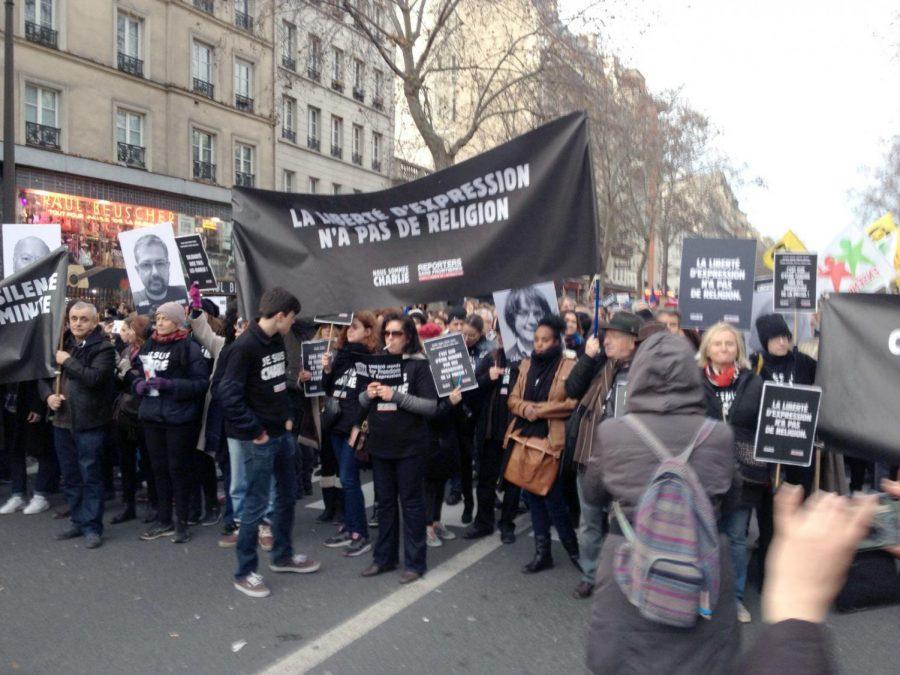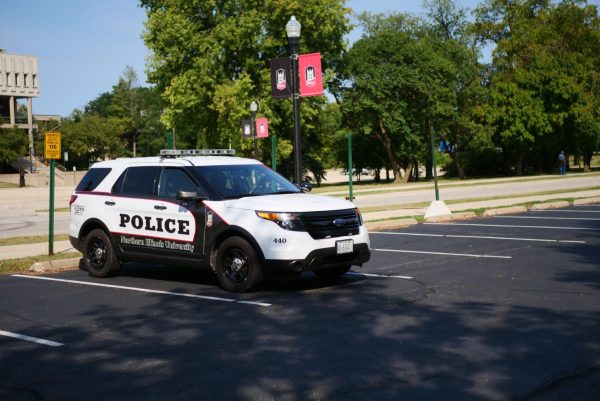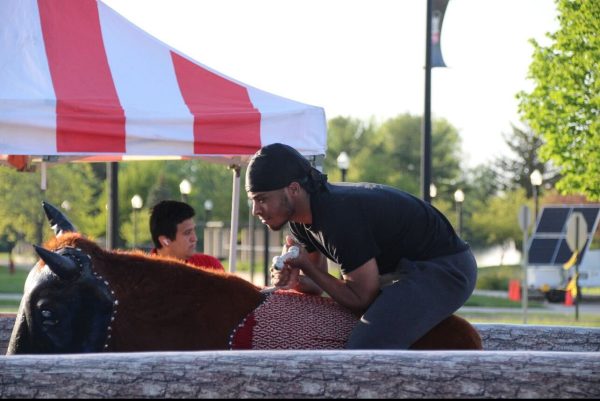NIU professor to take lessons from Paris’ Charlie Hebdo marches to history class
People march in the streets of Paris to show support for freedom of expression in the wake of the Jan. 7 Charlie Hebdo slayings. History professor Brian Sandberg, who was in Paris during the massacre, said he plans to use his experiences when teaching his comparative religious violence class.
January 20, 2015
An NIU professor will incorporate his experience living in Paris during the Charlie Hebdo attacks into his teaching next school year.
Associate history professor Brian Sandberg was living in Paris only a few hundred meters away from where the Jan. 7 Charlie Hebdo terrorist attacks occurred.
Sandberg said the comparative religious violence class he teaches at NIU examines religious terrorism today, including incidents like the attack on the magazine, in comparison with previous periods. Sandberg said he expects to teach this course in the fall or spring 2016 semester.
Witnessing the Attacks
On Jan. 7, two gunmen entered the offices of the French satire magazine Charlie Hebdo and began shooting. Twelve were killed and at least 10 were wounded in this attack. The attacks followed the release of a cartoon by the magazine depicting images of the Prophet Muhammad.
Sandberg, who is working as a Résident (Residential Fellow) at the Institut d’Études Avancées de Paris, said there’s usually a monthly tornado siren test. Sandberg said he knew something was wrong when the sirens didn’t end, so he went on the Internet and found reports of the shooting.
As time has passed since the attacks, Sandberg said Parisians are going about their daily routine.
“People are definitely talking about it when they run into their friends and whatnot, but there’s no general panic or anything,” Sandberg said.
Protests, Support
Sandberg said the evening the attacks occurred there was a rally with 35,000 people spontaneously gathering at Place de la République to have a vigil for the victims of the attack.
The only areas that shut down following the attacks were the places the violence actually occurred, Sandberg said. Sandberg said the climate in Paris following the attack has been normalcy combined with shock at the violence.
“In the States I think people are much more used to mass shootings going on; here, it’s very rare,” Sandberg said.
Sandberg also participated in the massive Marche Républicaine protest on Sunday, Jan. 11, which about 1.5 million people attended.
Sandberg said that there was a mix of emotions at the protest: There were people crying, some chanting “Je Suis Charlie” and others singing.
“There were lots of peace slogans, lots of ‘We are all Jewish, we are all Muslims, we are all Christian, we are all Atheist,’ all written together on the same sign,” Sandberg said.
Aftermath
Sandberg said he’s had experience with being close to violence: He was at NIU during the Feb. 14, 2008, shooting, and he lived in Paris during some smaller terrorist attacks in the ’90s and had family members living in New York at the time of the Sept. 11, 2001, terrorist attacks.
Sandberg said he feels safe living in Paris following the attacks.
“Being in Chicago, being in DeKalb, frankly, I feel more in personal danger than being in Paris,” Sandberg said.














